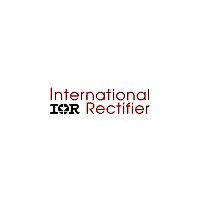IR3510MPBF International Rectifier, IR3510MPBF Datasheet - Page 16

IR3510MPBF
Manufacturer Part Number
IR3510MPBF
Description
IC XPHASE CONTROL 32-MLPQ
Manufacturer
International Rectifier
Series
XPhase™r
Datasheet
1.IR3510MTRPBF.pdf
(36 pages)
Specifications of IR3510MPBF
Applications
Processor
Mounting Type
Surface Mount
Package / Case
32-MLPQ
Package
32-Lead MLPQ
Circuit
X-Phase Control IC
Pbf
PbF Option Available
Lead Free Status / RoHS Status
Lead free / RoHS Compliant
Current - Supply
-
Voltage - Supply
-
Operating Temperature
-
Available stocks
Company
Part Number
Manufacturer
Quantity
Price
Part Number:
IR3510MPBF
Manufacturer:
IR
Quantity:
20 000
Loss-less inductor current sensing
Inductor current can be sensed by connecting a series resistor and a capacitor network in parallel with the inductor
and measuring the voltage across the capacitor.
The equation of the sensing network is,
Usually the resistor Rcs and capacitor Ccs are chosen so that the time constant of Rcs and Ccs equals the time
constant of the inductor which is the inductance L over the inductor DCR. If the two time constants match, the
voltage across Ccs is proportional to the current through L, and the sense circuit can be treated as if only a sense
resistor with the value of R
inductor DC current, but affects the AC component of the inductor current.
The advantage of sensing the inductor current versus high side or low side sensing is that actual output current
being delivered to the load is obtained rather than peak or sampled information about the switch currents. The
output voltage can be positioned to meet a load line based on real time information. Except for a sense resistor in
series with the inductor, this is the only sense method that can support a single cycle transient response. Other
methods provide no information during either load increase (low side sensing) or load decrease (high side
sensing).
An additional problem associated with peak or valley current mode control for voltage positioning is that they suffer
from peak−to−average errors. These errors will show in many ways but one example is the effect of frequency
variation. If the frequency of a particular unit is 10% low, the peak to peak inductor current will be 10% larger and
the output impedance of the converter will drop by about 10%. Variations in inductance, current sense amplifier
bandwidth, PWM prop delay, any added slope compensation, input voltage, and output voltage are all additional
sources of peak−to−average errors.
Current Sense Amplifier
A high speed differential current sense amplifier is located in the Phase IC, as shown in Figure 1. Its gain
decreases with increasing temperature and is nominally 34 at 25ºC and 29 at 125ºC (−1470 ppm/ºC). This
reduction of gain tends to compensate the 3850 ppm/ºC increase in inductor DCR. Since in most designs the
Phase IC junction is hotter than the inductor, these two effects tend to cancel such that no additional temperature
compensation of the load line is required.
The current sense amplifier can accept positive differential input up to 100mV and negative up to −20mV before
clipping. The output of the current sense amplifier is summed with the DAC voltage and sent to the Control IC and
other Phases through an on-chip 10K
Page 16 of 36
Figure 4 – Inductor Current Sensing and Current Sense Amplifier
L
was used. The mismatch of the time constants does not affect the measurement of
v
C
(
s
resistor connected to the ISHARE pin. The ISHARE pins of all the phases
)
=
v
L
CO
(
IR Confidential
s
)
1
+
CSA
sR
i
1
L
S
C
S
L
R
s
=
i
v
L
L
(
R
C
v
s
c
)
L
s
1
R
+
L
sR
+
V
S
sL
o
C
C
S
o
May 18, 2009
IR3510













